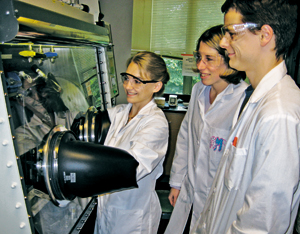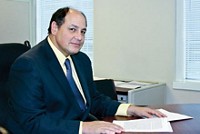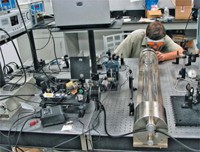Advertisement
Grab your lab coat. Let's get started
Welcome!
Welcome!
Create an account below to get 6 C&EN articles per month, receive newsletters and more - all free.
It seems this is your first time logging in online. Please enter the following information to continue.
As an ACS member you automatically get access to this site. All we need is few more details to create your reading experience.
Not you? Sign in with a different account.
Not you? Sign in with a different account.
ERROR 1
ERROR 1
ERROR 2
ERROR 2
ERROR 2
ERROR 2
ERROR 2
Password and Confirm password must match.
If you have an ACS member number, please enter it here so we can link this account to your membership. (optional)
ERROR 2
ACS values your privacy. By submitting your information, you are gaining access to C&EN and subscribing to our weekly newsletter. We use the information you provide to make your reading experience better, and we will never sell your data to third party members.
Policy
Group Science
After more than two decades, NSF's Chemistry Division adds a research center to its portfolio
by Susan R. Morrissey
December 17, 2007
| A version of this story appeared in
Volume 85, Issue 51

FOR MANY chemistry researchers, it may come as a surprise that it's been more than 25 years since the National Science Foundation's Chemistry Division directly supported a full-fledged chemistry research center. Until recently, the division had provided only indirect support for chemistry-related centers run by other NSF divisions—such as a Science & Technology Center at the University of North Carolina and a National Science & Engineering Center (NSEC) at Columbia University.
This summer, however, the Chemistry Division green-lighted the first "wholly owned " chemistry research center under its Chemical Bonding Centers (CBC) program. The new Center for Enabling New Technologies through Catalysis (CENTC), based in the University of Washington, Seattle, allows the division to foster interdisciplinary research, tackle large research problems, and increase the visibility of chemistry. But some members of the chemical community worry that funding these types of centers will take precious dollars away from the single-investigator awards that have historically provided the core support for chemical research.
"Centers give us the ability to do things in an interdisciplinary way," says Chemistry Division Director Luis A. Echegoyen. "Chemists have been doing this type of research piecemeal, but the center structure provides everything that they need to make it a reality."
This interdisciplinary activity means that the division can support large groups of researchers who want to tackle chemical problems that are too big or complex to be handled by a single investigator or even a small group, which Echegoyen defines as fewer than six people.
The newly funded CBC facility illustrates this point. CENTC was selected as the division's first center to enter Phase II of the CBC program, a distinction that comes with $3 million per year for five years. In 2004, CENTC was chosen as one of the first projects to enter Phase I of the program, which provided $500,000 a year for three years to show that the project's proposed mission was worth pursuing (C&EN, Oct. 11, 2004, page 33).
The goal of CENTC is to develop transformative catalytic reactions based on strong bond activation. According to center leader and chemistry professor Karen I. Goldberg, such work can lead to less expensive pharmaceuticals or petroleum-derived products, which can be produced with less energy and fewer unwanted by-products.
Current research projects at CENTC involve alkane metathesis and selective alkane oxidations, biomass conversion, water oxidation, and the development of metalloenzyme systems for organic synthesis.
"The CBC program allows a new approach to research that is complementary to the individual investigator program," Goldberg explains. Over the years, she notes, numerous individual investigators have been working as competitors on complex problems such as alkane functionalization and biomass conversion.
"This program has given us an opportunity to work as a team of very accomplished investigators, on a range of high-risk, high-impact problems, which as individual investigators we might not have had the critical mass, the range of insights and abilities, and the resources to tackle," Goldberg says. "In a sense, we are changing the playing field on several of the Holy Grail projects in chemistry from competition to collaboration."
IN ADDITION TO providing chemists with a framework for interdisciplinary collaboration, Echegoyen points out that establishing division-supported research centers will increase the visibility of chemistry. Specifically, he says, the well-organized planning that it takes for a center to win CBC funding and the ability of a center to turn out tangible products all help sell chemistry to the public as well as to congressional appropriators.
"Centers give us an opportunity to showcase our science in a better way than we have in the past," Echegoyen says. He adds that the chemical community is already benefiting from the highly visible operations of the two chemistry-related NSF centers outside of the Chemistry Division, and he hopes the same will be true about the division's own CBC center at the University of Washington.
Despite the benefits associated with such research centers, Echegoyen acknowledges that not everyone is keen on the division's support of them, or even its support of the small group grants known as Collaborative Research in Chemistry (CRC) grants, which the division doesn't consider to be in the same funding category as center grants. The primary fear is that such funding will draw money away from NSF's core single-investigator funding programs.
THIS APPREHENSION WAS highlighted in the report of the division's Committee of Visitors (COV)—a group of 30 prominent chemical scientists tasked with reviewing the division's activities. Although the group noted a need for collaborative research projects, its members could not agree on the "optimum balance" within the division's research portfolio.
"Some members of our COV believe that establishment of new centers and collaboratives may be one way to obtain new money and increased visibility for the division—a goal that all definitely support, provided that the single-investigator awards do not suffer further erosion," the report states.
The report also notes that because programs like CBC and CRC are still in their infancy, it's too early to tell if "these are more effective funding modes, in terms of research output per NSF investment, than single-investigator grants." The report therefore calls for an assessment of programs like CBC to determine if they should be "continued, modified, or expanded."
"We are very sensitive to the community's concern about preserving single-investigator awards," Echegoyen acknowledges. He points out that the division plans not to take dollars away from single-investigator awards to fund centers but rather to increase center support in tandem with the growth of the division's overall budget.
When you add up the money the Chemistry Division is putting into the centers both inside and outside of the division, Echegoyen says, the total investment in centers is 4.8% of its $199 million budget for fiscal 2007. Even if you add in the funding for CRCs, which some in the community consider to be centerlike, the total funding for grants involving groups grows to just under 13%. (For its part, the division considers CRCs as part of its core grants and includes this funding with single-investigator support.)
According to Echegoyen, center support will get a boost in fiscal 2008, with the division dedicating 4.3% of its $210 million specifically to the CBC program. Add in the money devoted to centers outside of the Chemistry Division and that proportion amounts to 7% of the total division budget for 2008. The CBC funds will support a second Phase II center and as many as three new Phase I projects, in addition to CBC projects already under way, he says.
Echegoyen also notes that the CBC program soon will be rebranded to become Centers for Chemical Innovation (CCI). Although some of the details are still being worked out, the program will retain its two-phase structure with Phase I funding of $500,000 per year for three years and Phase II center funding of $3 million per year for five years. The renamed CCI program, however, will require projects to include some industrial buy-in through technical, financial, or other types of support.
"We want to see that industry is honestly interested in what is being proposed to be done at the center," Echegoyen says. Having such industrial involvement helps ensure new products or processes invented by the center are picked up and developed for commercial use. This safeguard helps align CCI with the America Competes Act, which Congress passed this summer to bolster U.S. competitiveness.
This industrial component was a natural fit for CENTC since catalysis is so central to the chemical, pharmaceutical, and petroleum industries, Goldberg notes. This connection has led to the inclusion of six industrial partners, including Dow Chemical and ExxonMobil, to the center's more than 50 researchers.
"It will be our industrial contacts who can take our discoveries and exploit them for large-scale commercial processes," Goldberg says. "CENTC is doing basic scientific research, but the goal is really to provide the underlying fundamental science that will allow the development of new and powerful catalysts for high-impact transformations."
Industrial partners can also provide key input on center projects, says Ronald Breslow, chemistry professor and scientific director at Columbia's NSEC. "Industrial partners in our case keep us up to date with work that is not otherwise widely published, and they help us see what solutions to problems in molecular electronics could have practical applications," he says.
Breslow adds that his center and its partners have been able to smoothly work out intellectual property issues, something Echegoyen hopes will happen with CCIs. "By requiring strong industrial participation, intellectual property issues can be resolved up front," Echegoyen says.
In the end, however, the decision to support more centers will come down to what the chemistry community wants. "If we don't get any proposals, then we will put all of our money into single-investigator grants," Echegoyen says. Judging from the growing interest in center-scale funding that enable larger groups pursue high-risk, high-reward research, this is not likely to happen.
If chemists have a problem that requires one, four, or 10 researchers to solve, the Chemistry Division has a funding option to offer, Echegoyen says.






Join the conversation
Contact the reporter
Submit a Letter to the Editor for publication
Engage with us on Twitter